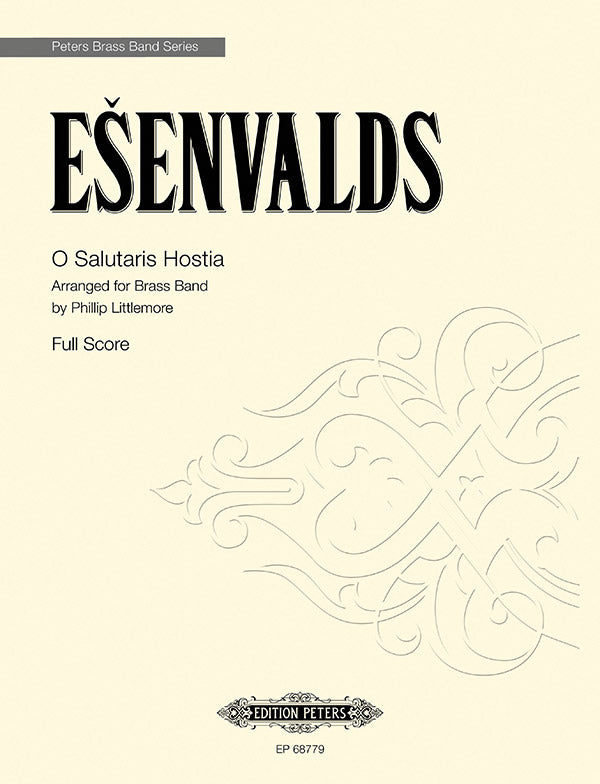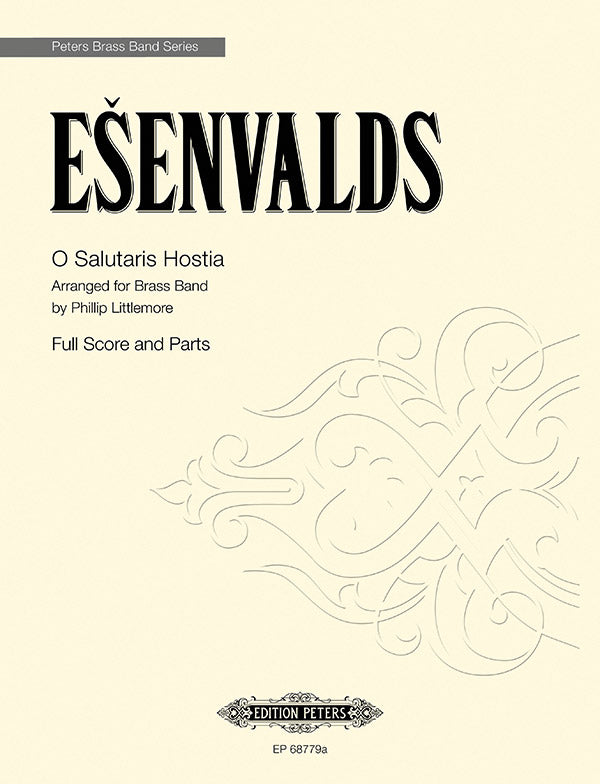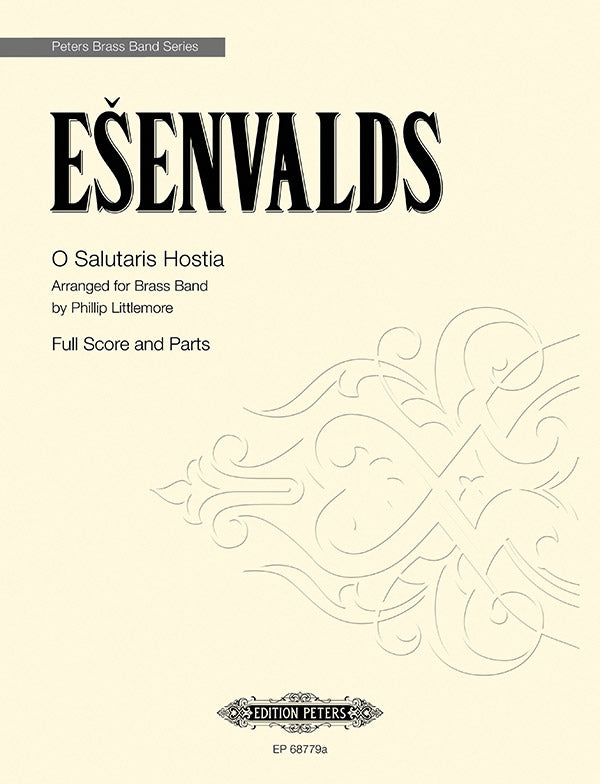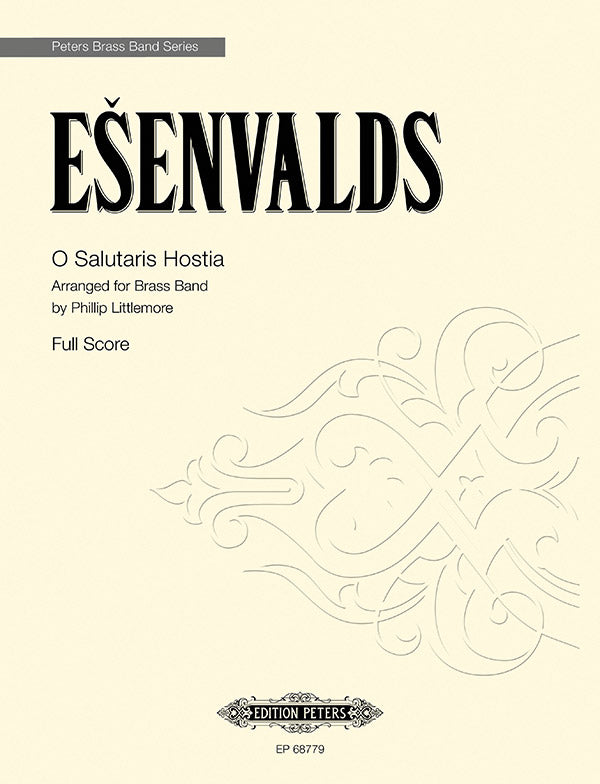Ēriks Ešenvalds
Ešenvalds: O Salutaris Hostia
Arranged for Brass Band by Phillip Littlemore
- Composer: Ēriks Ešenvalds (1977-)
- Arranger: Phillip Littlemore
- Editor: Phillip Littlemore
- Instrumentation (this edition): Brass Band
- Originally for: SATB Choir
- Work: O Salutaris Hostia
- ISMN:
- Pages: 8
Description
O Salutaris Hostia is one of Eriks Ešenvalds' most popular pieces. Originally written for female voices, the composer later created a version for full choir on which this arrangement is based. It has a gentle meditation with the two soloists drifting across the soft band accompaniment, alternately echoing and imitating each other or joining together in thirds. The effect is quietly ecstatic, a brief moment of adoration and wonderment. This arrangement can be played with either two cornets or two euphoniums as soloists as the accompaniment works just as effectively with either.
- Brings contemporary choral repertoire by a leading international composer to the band world
- Arrangement of Eriks Ešenvalds' highly successful choral piece 'O Salutaris Hostia'
- Arranged by brass band specialist Phillip Littlemore
- Part of EP Brass Band Series
- Meditative, beautiful piece, highly attractive for audiences, and proven success as a choral work
- Suitable for intermediate band at 2nd Section and above
Orchestration:
1 1st Bb Soloist, 1 2nd Bb Soloist, 1 Eb Soprano Cornet, 1 Bb Solo Cornet (marked tacet), 1 Bb Repiano Cornet, 2 2nd Bb Cornet, 2 3rd Bb Cornet, 1 Bb Flugel Horn, 1 Solo Eb Horn, 1 1st Eb Horn, 1 2nd Eb Horn, 1 1st Bb Baritone, 1 2nd Bb Baritone, 1 1st Bb Trombone, 1 2nd Bb Trombone, 1 Bass Trombone, 1 Bb Euphonium (marked tacet), 2 Eb Basses, 2 Bb Basses, Timpani, 1 Percussion (suspended cymbal)
Publishers use a lot of words to describe what they sell, and we know it can be confusing. We've tried to be as clear as possible to make sure you get exactly what you are looking for. Below are descriptions of the terms that we use to describe the various formats that music often comes in.
Choral Score
A score for vocalists that only contains the vocal lines. The instrumental parts are not there for reference. Generally, cheaper than a vocal score and requires multiple copies for purchase.
Facsimile
Reproductions of the original hand-written scores from the composer.
Full Score
For ensemble music, this indicates that the edition contains all parts on a single system (there are not separate parts for each player). In larger ensembles, this is for the conductor.
Hardcover
Hardbound. Generally either linen-covered or half-leather.
Orchestral Parts
Similar to a wind set, this is a collection of parts. In the case of strings, the numbers listed are the number of copies included, though generally these are available individually (often with minimum quantities required).
Paperback
When publishers offer multiple bindings (e.g. hardcover) or study scores, this is the "standard" version. If you're planning to play the music, this is probably what you want.
Performance / Playing Score
A score of the music containing all parts on one system, intended for players to share. There are not separate parts for each player.
Set of Parts
For ensemble music, this indicates that there are separate individual parts for each player.
Solo Part with Piano Reduction
For solo pieces with orchestra, this is a version that contains a piano reduction of the orchestra parts. For piano pieces, two copies are typically needed for performance.
Study Score
A small (think choral size) copy of the complete score meant for studying, and not playing. They make great add-ons when learning concertos and small chamber works.
Vocal Score
A score prepared for vocalists that includes the piano/organ part or a reduction of the instrumental parts.
Wind Set
For orchestral music, this is a collection of wind and percussion parts. The specific quantities of each instrument are notated.
With Audio
In addition to the printed music, the edition contains recordings of the pieces. This may be an included CD, or access to files on the internet.
With / Without Fingering (Markings)
Some publishers prepare two copies - a pure Urtext edition that includes no fingering (or bowing) suggestions and a lightly edited version that includes a minimal number of editorial markings.






